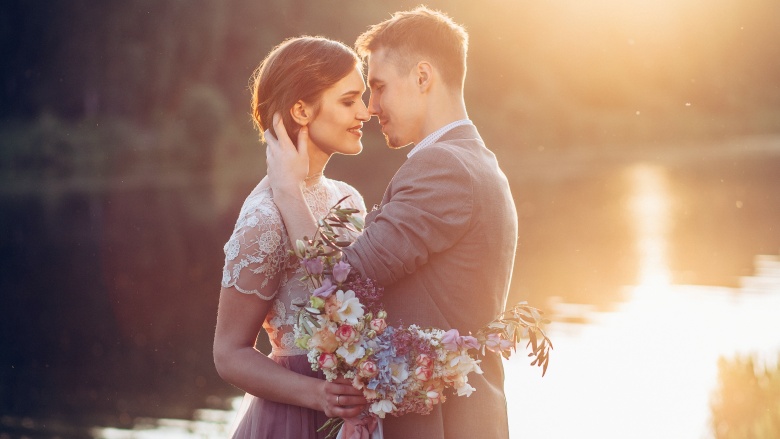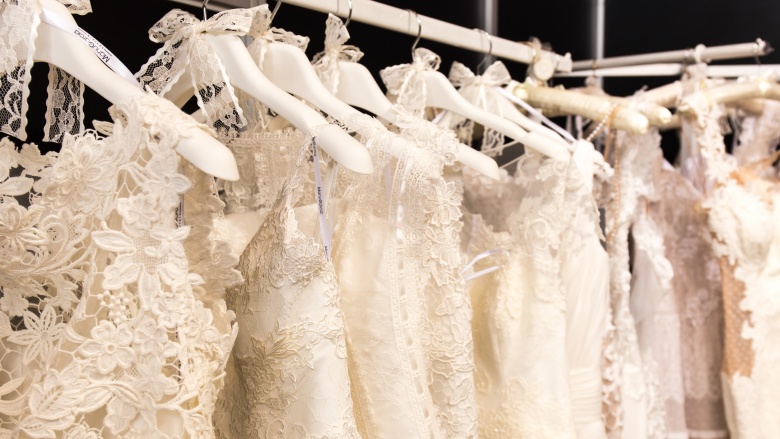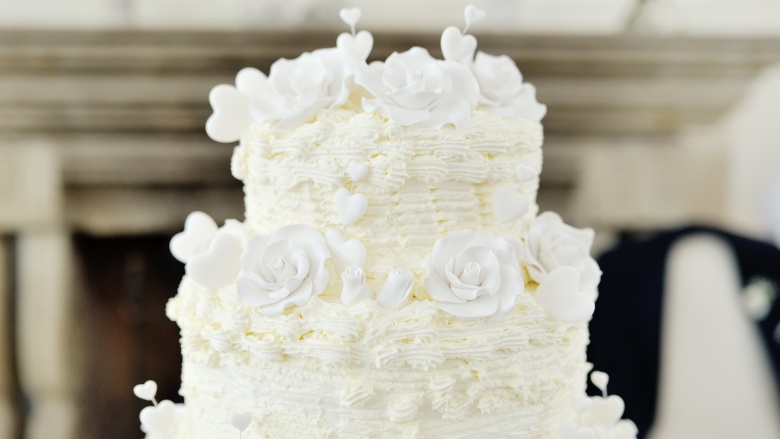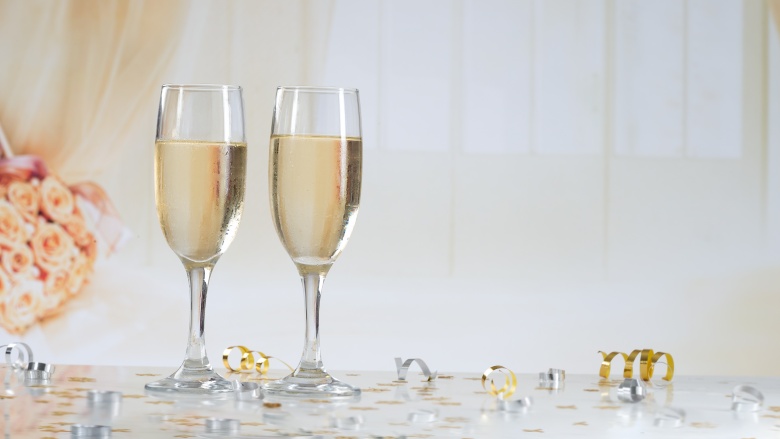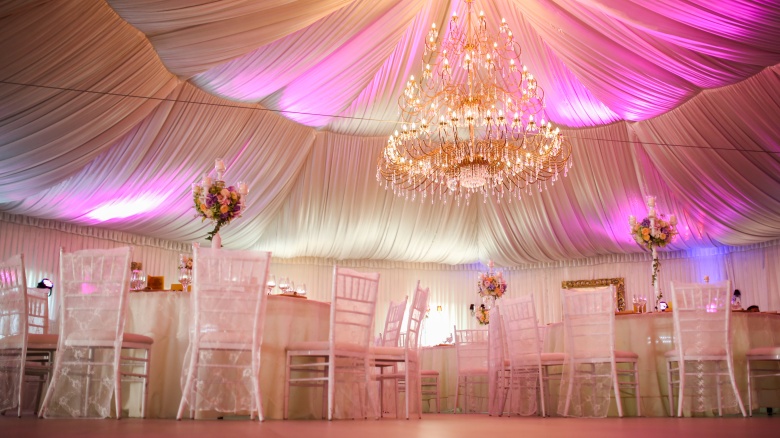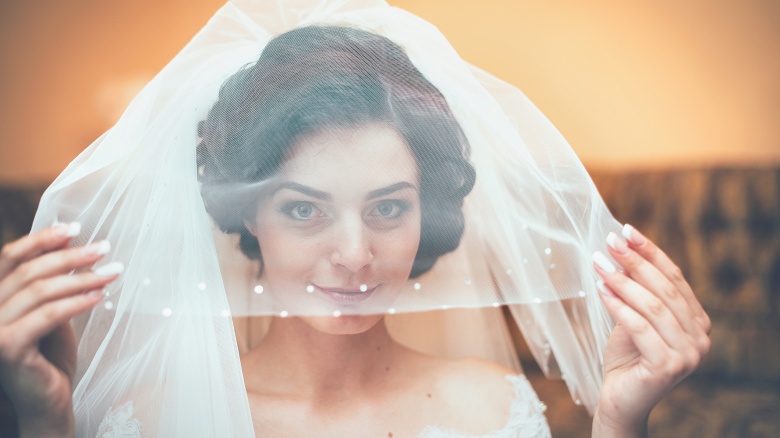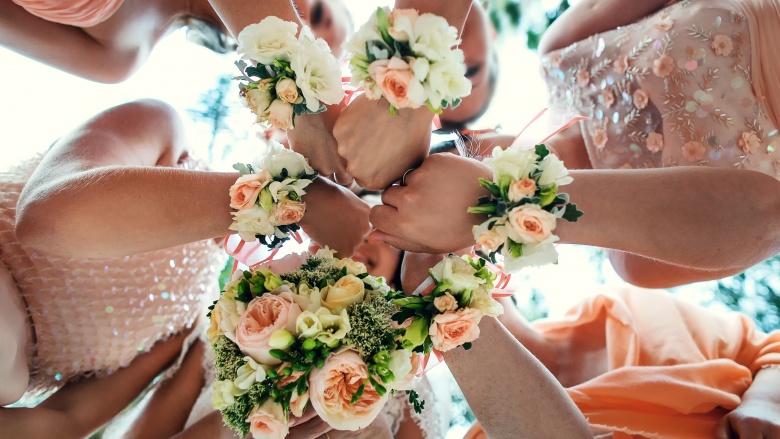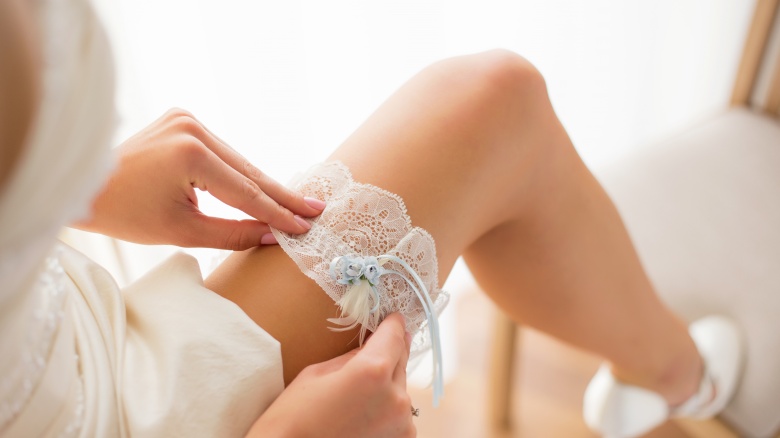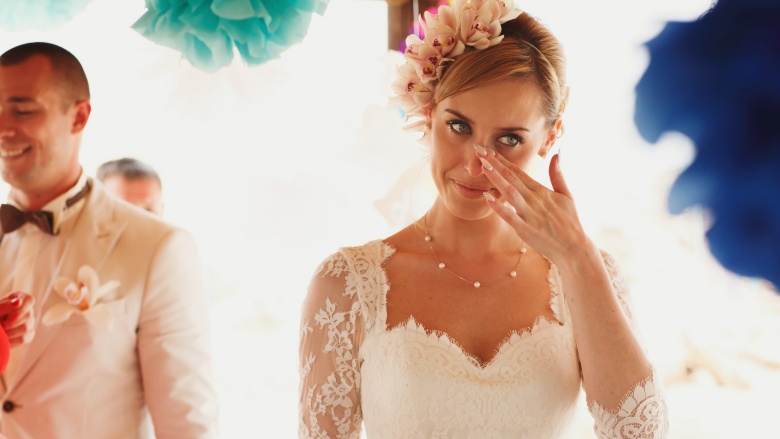Everything You Know About Weddings Is Wrong
From the time we're little girls, women daydream about our wedding days. We picture the dress, the venue, the flowers, and the cake far before we ever imagine who we'll be walking down the aisle toward. It's beautiful, magical, and — for the most part — inspired by everything we see in movies, tabloids, and on social media.
Gorgeous white gown? Check. Guest list of your favorite people in the world? Check. Four-tier wedding cake? Check. But in the midst of all the planning, do most brides ever stop to think why we obsess so much over certain wedding traditions? Probably not.
The truth is, almost every aspect of a wedding — from the veil to the bouquet toss — has a rich history, shaped by religious and societal beliefs dating back thousands of years. And if there's anything to learn from taking a closer look at some of these age-old traditions, it's that weddings are far from the grand and perfect affairs many of us seem to imagine. In fact, the celebration of marriage has historically been, if anything, a little bizarre.
Here's the truth behind several traditions that might change the way you look at weddings.
Weddings weren't always such formal affairs
We love a formal affair as much as the next girl. And while we're not ashamed to admit we were drooling over the grandeur and very expensive look of the wall of flowers that was the backdrop at Kim Kardashian and Kanye West's 2014 wedding ceremony, we're also aware that celeb weddings aren't the norm.
As explained on an episode of truTV's Adam Ruins Everything, weddings were historically informal events held in homes or at community functions like barn raising events. In fact, up to and during the Middle Ages, couples often got married without witnesses or members of the clergy there to perform a ceremony.
Brides didn't always wear white
You can blame Queen Victoria for starting the whole white wedding dress trend. She wore white when she married Prince Albert in 1840, and it's been a tradition for brides ever since. Before that, women wore whatever nice dress they had on their wedding day.
And as far as white being a sign of purity and innocence? Well, that wasn't always the case, either. In fact, people like Queen Victoria wore white as a sign of wealth. At the time, white fabric was so hard to clean, it was reserved for rich women who could afford to buy a dress they would only wear once.
White cakes were historically reserved for the wealthy
Chocolate lovers, rejoice! While you may think that a white cake is mandatory at your wedding, the tradition behind it may have you running toward a chocolate- or strawberry-frosted cake instead.
According to Gastronomica, prior to the seventeenth century, the wedding cake was "more like a pie than a cake, filled with a mixture of dried fruits, apples, spices, and breadcrumbs." By the 1540s, when sugar became more readily available, the demand for white wedding cakes grew. But because white icing was still quite expensive at this time, a white cake was seen as a symbol of wealth, much like the white wedding gown.
You don't need half the things on your wedding registry
Champagne flutes, cheese boards, expensive china ... do newlyweds really need all this stuff? The short answer is no. But you can thank Bride's magazine for making us all think we do. In the 1920s, the publication got together with furniture dealers, real estate agents, and kitchen appliance manufacturers to expand the market and "introduce new traditions," according to Vicki Howard, an associate professor of history at Hartwick College. Howard wrote that this eventually evolved into the wedding registries we're familiar with today. Thankfully, these too are ever-evolving, with more couples opting to (politely) ask for cash instead, sometimes creating registries for honeymoon or home-building funds.
Yes, weddings are too expensive
If you've ever been the victim of wedding sticker shock (flowers cost how much?), then no one has to tell you the industry seems a tad bit on the expensive side. And that's because, well, it is. According to CNN Money, the average wedding in 2015 cost more than $30,000, up 4 percent from 2013.
Even worse, Consumer Reports found that couples often fall victim to what's become known as the "wedding tax," where vendors like limo companies and photographers charge more for weddings than they would for a regular party of the same size.
A lavish wedding doesn't ensure a successful marriage
In fact, it may be quite the opposite. Using data from a survey given to more than 3,000 people who have been married, Emory University economics professors found couples who spend more on their weddings actually have shorter marriages. Research showed couples who spend more than $20,000 on their nuptials had a divorce rate that was 3.5 times higher than couples who spent between $5,000 and $10,000. They also found that divorce was 1.3 times more likely among men who spent between $2,000 and $4,000 on engagement rings compared to those who spent between $500 and $2,000.
Wedding veils are sort of an awful tradition
Sure, wedding veils look pretty, but did you know some historians say they were first worn as a way to ward off evil spirits? In the book Planet Wedding: A Nuptial-pedia, authors Sandra and Harry Choron write that in ancient Rome and Greece, brides wore a red or yellow veil, known as a flammeum (according to the Illustrated Encyclopedia of World Costume by Doreen Yarwood), to look like they were actually on fire. Um, so romantic?
You don't really need bridesmaids, either
These days, bridesmaids can help out with everything from planning your bachelorette party to holding up your dress while you pee during the reception (how else do you think brides pull this off?). Pretty different from why brides originally had them — to ward off evil spirits. So unless you're really worried about some demonic forces showing up at cocktail hour, then we'd say the whole bridesmaid thing is more of a novelty at this point.
The bottom line: if you can't bear the thought of narrowing down your girl squad to only a select few, or if you feel weird about asking your girls to drop so much cash on a bridesmaid dress, skip it. It's your big day, after all. On the other hand, if you're all about having bridesmaids, then go for it. You may even want to ask someone to bring a Ouija board along, you know, for tradition's sake.
If you find the garter tradition creepy, you aren't alone
Showing some leg in front of all your family and friends may seem creepy enough, but just be thankful you weren't born in a different era. According to George Monger's Marriage Customs of the World, traditionally "bridal garters were prized as love tokens with magical properties." Before the groom became tasked with the tradition of removing a bride's garter, it was actually the job of male wedding guests! Yes, men would try to take the garters off brides and pin them onto their hats for good luck. And the competition got quite fierce. In fact, the magazine reports that in 1919's Wedding Customs Then and Now, written by Carl Holliday, brides were told to "fasten it loosely to the bottom of her dress [or] find her clothes in rags after the struggle." Talk about awkward and inappropriate.
It probably won't be perfect
The bridal industry sells weddings as this "perfect" day where nothing goes wrong. But the truth is something probably will. It could rain. The limo might be late. Your third cousin twice removed could get drunk and make a fool of herself on the dance floor. If you're expecting perfection, you're bound to be disappointed. On the other hand, if you go into your wedding day without putting so much pressure on everything to be perfect, you'll probably end up having a lot more fun.

